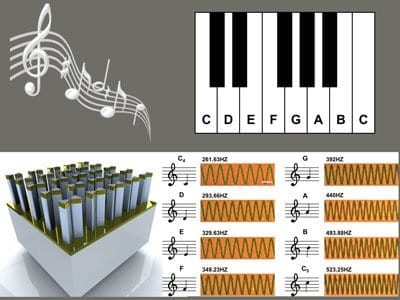
Optical data storage does not require expensive magnetic materials as synthetic alternatives work just as well.
This is the finding of an international team from York, Berlin and Nijmegen, published Thursday February 27 in Applied Physics Letters. The team’s discovery brings the much cheaper method for storing data using light a step closer. It was Professor Rasing, physicist at Radboud University Nijmegen and FOM workgroup leader, who came up with the new synthetic material.
When you store a file on your laptop or PC, the computer creates a code consisting of zeros and ones. These are actually tiny magnetic poles (spins) that can point in one of two directions: the ‘zero’ state or the ‘one’ state. Switching these spins using a magnetic field is a relatively slow, energy-intensive process. An alternative is to switch them using light, which was first achieved by Radboud researchers six years ago. They have been searching for suitable materials ever since. Theo Rasing: ‘Optical switching is only possible in special magnets, called ferrimagnets. However, these magnets are made of expensive rare earth metals, which are also difficult to produce at the nano-scale. Now, we have shown for the first time that it is also possible to switch synthetic ferrimagnets optically.’
Ferrimagnets
Ferrimagnets have the unusual property that the spins are not all of the same magnitude. ‘They are similar to anti-ferromagnets, in which the spins are found in pairs with opposite directions. However, because the magnetic poles have different magnitudes, ferrimagnets have a net magnetic moment,’ explains Rasing. This can be simulated by anti-ferromagnetically coupling thin layers of iron with a spacer layer. ‘The iron is ferromagnetic – all the spins have the same magnitude and direction. It is therefore possible to create a net magnetic moment by combining two layers of different thicknesses and opposing magnetisation directions, for example. Coupling the spins works in a very similar manner, in the same two-step process that we previously developed for the normal ferrimagnets.’
Other than with normal ferrimagnets, the production of synthetic ferrimagnets does not require the use of rare earth metals. This makes them cheaper and better for the environment, and therefore more suitable for use in computers. Rasing: ‘I really believe that this is the start of a fundamentally new form of data storage, and possibly data processing too.’
The Latest on: Cheap data storage
[google_news title=”” keyword=”Cheap data storage” num_posts=”10″ blurb_length=”0″ show_thumb=”left”]
via Google News
The Latest on: Cheap data storage
- In an AI arms race, data centers are going nuclearon May 6, 2024 at 3:01 am
Data centers are scrambling to secure large sources of electricity. Nuclear power looks more like an option.
- Here is the cheapest time to travel to Europe’s pricey and popular citieson May 4, 2024 at 6:42 pm
“Shoulder season is the period before or after peak season but not yet the off-season. For example, many European destinations have a very busy summer (July/August) but May, June, September, and ...
- Have $1,000? 3 Absurdly Cheap Stocks Long-Term Investors Should Buy Nowon May 2, 2024 at 3:00 am
InvestorPlace - Stock Market News, Stock Advice & Trading Tips It’s no secret that the stock market can be a whirlwind, tossing around ...
- How to fix System Data filling your iPhone's storageon May 1, 2024 at 10:47 am
Your iPhone may have low storage because it's been consumed by System Data, which can potentially consume all available capacity. Here's how to regain space when things get too bloated to function.
- The best cheap SSD deals and prices for May 2024on May 1, 2024 at 8:44 am
So, we’re here to help you find the top cheap SSDs for your storage needs ... It’s speeds reading and writing data, both big and small, also keep up with the competition.
- Will Americans Ever Get Sick of Cheap Junk?on April 30, 2024 at 8:31 am
What would it take for shoppers to get tired of cheap junk? In all the years I’ve spent covering American consumerism, I’ve heard one type of question from readers far more than any other: This can’t ...
- Best external hard drive deals: Portable SSDs, game drives & moreon April 29, 2024 at 5:00 pm
As cheap as storage is per gigabyte nowadays ... If, on the other hand, you’re frequently ferrying data around from one PC to the next, then a portable hard drive might be a better choice, ...
- Best cloud storage of 2024on April 29, 2024 at 2:46 am
That could be down to data privacy concerns ... Don't subscribe if: You're on a strict budget: IDrive isn't the cheapest cloud storage on the market, with some of the more appealing price ...
- The tiny glass blocks that can preserve your data for centurieson April 27, 2024 at 12:01 am
For years governments, hospitals and families have had to use frail magnetic storage for their most important data. Now, scientists have an alternative — that lasts for ever ...
- Reshaping the data center: IBM’s advancements in storage technologyon April 26, 2024 at 9:41 am
Stay ahead with IBM's future-ready solutions in storage technology. Learn how IBM addresses key infrastructure challenges and leverages AI.
via Bing News










